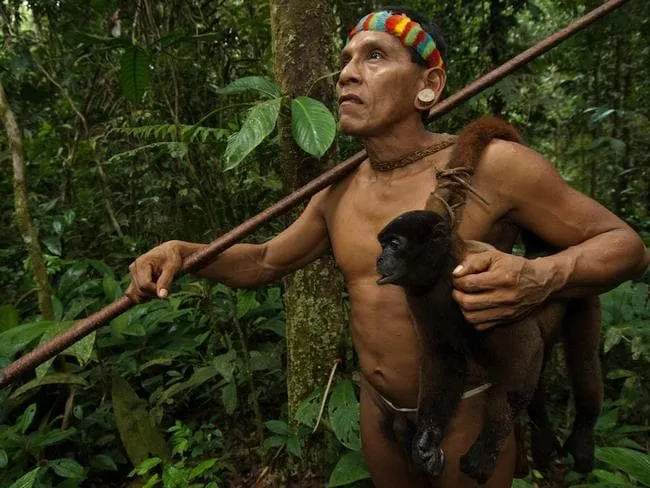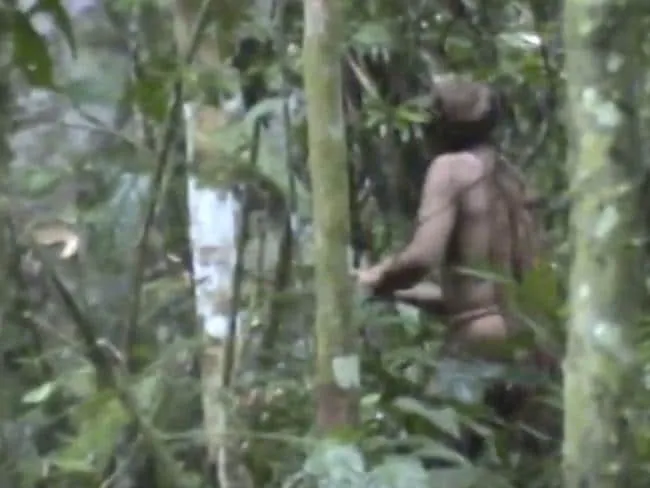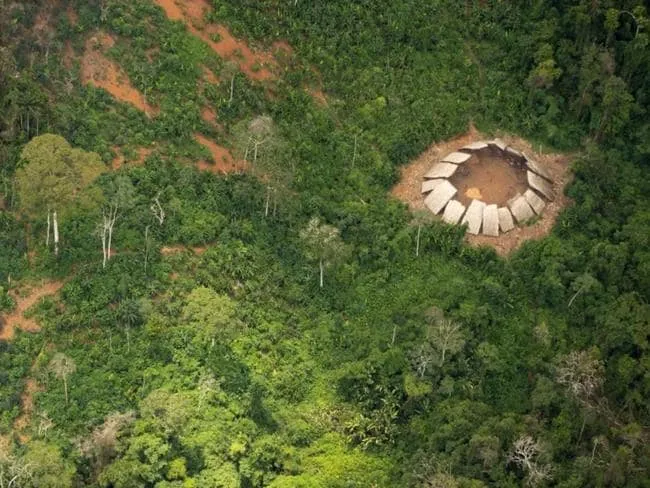THE Brazilian Amazon is home to mysterious uncontacted tribes, who live isolated lives deep in the jungle, unaware of modern life.
IN THE heart of the Amazon there are still hundreds of mysterious uncontacted tribes living their lives completely oblivious to the modern world.
In one recent example of their sheer isolation, the last surviving member of one tribe was filmed after more than two decades of living completely alone in the jungle.
He is the only survivor of an uncontacted tribe whose six other members were killed by land grabbers and farmers.
The uncontacted tribes live in extreme isolation in the forest and are rarely filmed.
Over the years their fear of the encroaching world has led to them to develop a fear of contact with outsiders.
They often fire their bows and arrows at helicopters or planes that make contact with them.

WHO ARE THE LAST REMAINING UNCONTACTED TRIBES?
Uncontacted tribes are people who have no contact with anyone in mainstream society and are made up of entire tribes or smaller groups of tribes.
They have developed ways of lives that are entirely self-sufficient.
Some are nomadic hunter-gatherers constantly on the move who are able to build a home within hours and abandon it days later, says Survival International, which campaigns on behalf of indigenous people.
Others are more settled, living in communal houses and planting crops in forest clearings as well as hunting and fishing.
HOW MANY UNCONTACTED TRIBESPEOPLE ARE THERE?
There are at least 100 uncontacted tribes living in Brazil alone and experts believe they number up to 3000.
Other groups of uncontacted tribes also can be found in Colombia, Ecuador, Peru and northern Paraguay.
In the Brazilian state of Acre there could be as many as 600 tribespeople, belonging to four different groups, who live in relative tranquillity.
Others such as the Kawahiva, whose land is under threat from loggers, teeter on the edge of extinction with no more than a handful left.


WHAT SORT OF BELIEFS DO THEY HAVE?
Amazonian tribes have belief system sees the rainforest as the home of spiritual life, with every flower, plant and animal containing its own spirits.
Many perform rituals using hallucinogenic drugs prepared from the bark of the virola tree to see the spirits.
WHAT CONTACT DO THEY HAVE WITH THE OUTSIDE WORLD?
Despite being described as uncontacted people, such groups do in fact all have a history of contact, whether from past exploitation or simply seeing a plane or helicopter flying overhead.
Many simply wish to be left alone while others have fled into hiding many years ago after violent encounters with the outside world.
Their way of life has been threatened by incursions on to their land from mining, logging, cattle ranching, cocaine trafficking and missionary activity.
Kim Hill, an anthropologist at Arizona State University, has interviewed tribespeople who have come out of isolation.
He says they are interested in making contact but fear drives their decision to lead isolated ways of life.
“People have this romanticised view that isolated tribes have chosen to keep away from the modern, evil world,”

HOW HAVE TRIBES FARED AFTER BEING CONTACTED?
According to Survival International “time and time again, contact has resulted in disaster for Brazil’s uncontacted tribes”.
Given their isolation they are not able to build up immunity to diseases common elsewhere.
It is not unusual for half of a tribe to be wiped out within a year of first contact by diseases such as measles and influenza.
The Matis tribe population fell by half following contact, when both young and old died from introduced diseases.
As well as disease, coming into contact with the outside often results in violence.
For example 10 members of a remote Amazonian tribe were hacked to death by ruthless gold miners out to seize their land last year, reported Sun Online.
Prosecutors alleged the killers went into a bar and bragged about what they had done.
WHY DO EXPERTS CHOOSE NOT TO CONTACT THE TRIBES?
Up until the 1980s the Brazilian government tried to establish peaceful contact with uncontacted tribes.
The aim was often to assimilate them into mainstream society and metal tools were often used as a means of luring them from their areas.
But this often led to violence and disease outbreaks among the tribespeople.
Undetected tribes living in Brazil do so under the protection of a government agency, FUNAI.
FUNAI avoids contact with the tribes in a bid to ensure disease is not spread so they able to continue with their life without fear.
But Robert Walker, an anthropologist at the University of Missouri, argues non-contact is untenable.